Modern tire technology blends a unique mix of chemistry, physics and engineering to give consumers a high degree of comfort, performance, efficiency, reliability and safety. Many tires are custom-designed to meet the stresses and performance needs specified by the maker of a particular model vehicle.
Every tire is carefully inspected, and random samples are pulled for additional safety tests. As part of these tests, tires are x-rayed, cut apart and examined, run on test wheels, or road-tested to evaluate handling, mileage and traction performance. If properly cared for, tires can last a long time – usually from 40,000 to 80,000 miles, depending on the application.
As many as two hundred different raw materials combine into a unique mix of chemistry, physics and engineering to give consumers the highest degree of comfort, performance, efficiency, reliability and safety modern technology and creativity can provide. Here are the basic steps:
Planning and Design
Many tires are custom-designed to meet the stresses and performance needs specified by the maker of a particular model vehicle. The process begins with a computer, which converts the mathematics of the car’s special needs into specifications. A prototype tire is then made to test the tire design’s ability to provide the desired characteristics. Custom-designing a tire for a particular vehicle typically takes many months of testing, inspection, and quality checks by the tire maker and the vehicle maker. Only then does the vehicle maker commit with an order.
Manufacturing
The production process begins with the selection of several types of rubber along with special oils, carbon black, pigments, antioxidants, silica, and other additives that will combine to provide the exact characteristics wanted. Separate compounds are used for different parts of the tire. A machine called a banbury mixer combines the various raw materials for each compound into a homogenized batch of black material with the consistency of gum. The mixing process is computer-controlled to assure uniformity. The compounded materials are then sent to machines for further processing into the sidewalls, treads or other parts of the tire.
The compounded materials are then sent to machines for further processing into the sidewalls, treads or other parts of the tire.
Then the task of assembling the tire begins. The first component to go on the tire building machine is the innerliner, a special rubber that is resistant to air and moisture penetration and takes the place of an inner tube. Next come the body plies and belts, which are often made from polyester and steel. Plies and belts give the tire strength while also providing flexibility. The belts are cut to the precise angle and size the tire engineer specifies to provide the desired ride and handling characteristics. Bronze-coated strands of steel wire, fashioned into two hoops, are implanted into the sidewall of the tires to form the bead, which assures an airtight fit with the rim of the wheel. The tread and sidewalls are put into position over the belt and body plies, and then all the parts are pressed firmly together. The end result is called a “green” or uncured tire.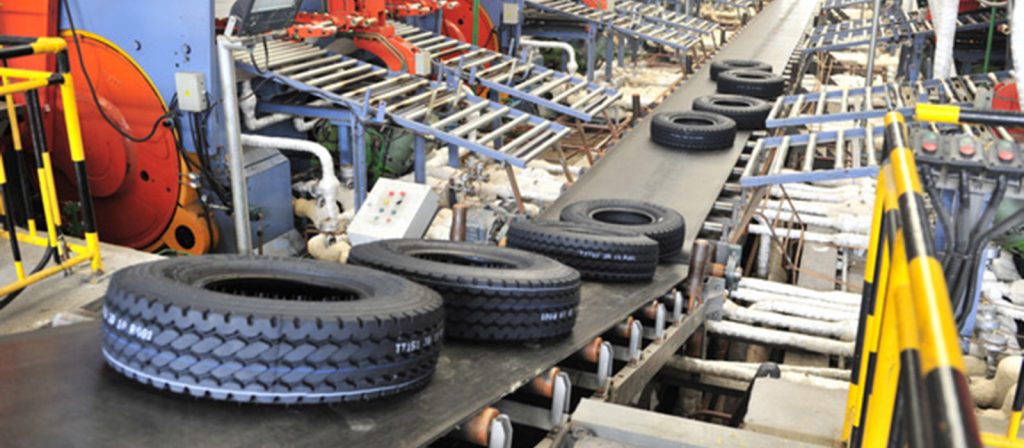
The last step is to cure the tire. The “green” tire is placed inside a mold and inflated to press it against the mold, forming the tread and the tire identification information on the sidewall. Then it is heated at more than 300 degrees Fahrenheit for twelve to fifteen minutes, vulcanizing it to bond the components and to cure the rubber. (FACT: This twelve to fifteen minute curing process is for passenger and light truck tires only, off-road and large tires may take up at a day to cure because of their size!) Every tire is then inspected, and sample tires are randomly taken from the line and tested. Some are x-rayed, some are cut apart to look for flaws, others are run on test wheels, or road-tested to evaluate handling, mileage and traction performance.
If you’re like us, you spend an unhealthy amount of your precious time thinking about tires. If you’re like everyone else, you probably only consider your tires when they’re causing you problems or when they need to be replaced. But even if they’re the last thing on your mind, tires are a critical component of automotive design that has changed the way we travel in vehicles of all types, so it’s worth taking the time to learn about them.
But even if they’re the last thing on your mind, tires are a critical component of automotive design that has changed the way we travel in vehicles of all types, so it’s worth taking the time to learn about them.
Throughout the past twelve decades or so, tires and automobiles have come a long way, to say the least. The rubber you drive on every day is similar in many ways to the tires of years ago, but new technology and safety requirements have pushed modern tire design into the fascinating territory. Tires are capable of improving the handling, safety, and ride quality of your car, so the Guides & Gear editors from The Drive are here to help you understand the basics of how they’re made. We consulted the professionals at Michelin to help explain how they're constructed, what they're made of, and how they've changed throughout the years.
The Drive and its partners may earn a commission if you purchase a product through one of our links. Read more. , Goodyear
, GoodyearLet’s get rolling.
Put simply, tires are rings of rubber that fit around a vehicle’s wheels to cushion the vehicle from the road and help keep it under control. Tires are the only parts of a vehicle that are actually designed to touch the pavement. Though there are many types of tires, the most common for passenger vehicles are pneumatic tires, which are inflated with air or gas to maintain pressure. Most tires today are radial, which means that the cords and internal components are aligned to be perpendicular (90 degrees) with the driving direction.
It’s important to note that tires are not a monolithic group. There are different types, each with a specific function and purpose. Racing tires, for example, are designed to provide maximum grip and cornering performance at the expense of all else (ride quality and longevity, mainly), while passenger car tires are designed to give the vehicle a smooth and quiet ride, good fuel economy, and reasonable safety.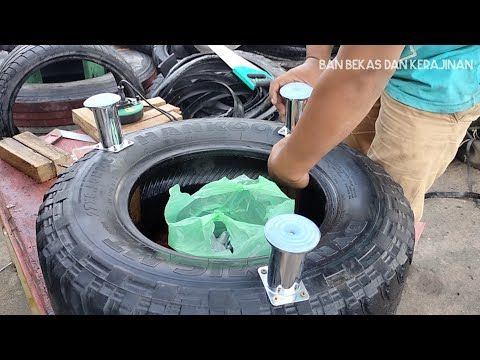
Although we can’t go back in time to meet the people who invented the wheel, we do know when modern-style pneumatic tires were first put to use. The first pneumatic tires were developed in the mid-1800s by a guy named Rober William Thomson, but weren't affordable or practical enough for mass production. In 1888, John Boyd Dunlop developed a pneumatic tire for bicycles that is credited as the first widely available model. Though Michelin developed a tire for the automobile, it wasn't durable enough to be sold and didn't take off. It took until 1911 for a tire with an air-filled inner tube to have success.
As everyone preferred some impact protection, pneumatic tires became the norm. Treads were then added in the early 1900s, and tire tech progressed quickly from there, though not without some fairly horrible prospective paths along the way. The DuPont Company developed a commercially viable synthetic rubber in the early 1930s, paving the way for the natural and synthetic mix that's still the preferred method for making tires today.
Since the first tires in the late nineteenth century, tires have been developed for specific applications, including tubeless tires, radial tires, run-flat tires, winter tires, and mud tires, among many others. With the realization that tire production and subsequent disposal or recycling is having a significant and negative impact on the environment, tire manufacturers are trying to shift their focus to ensuring that their tires and the processes that build them are doing as little harm as possible. Tire giants like Michelin, for example, have launched elaborate long-term sustainability initiatives that involve sourcing as many recycled and bio-sourced materials as possible. Michelin says that its modern tires are made from over 200 components and materials and notes that it has invested in an in-house technology incubator to find ways to convert as many of those components to sustainable and recycled materials—certainly a tall task.
Another apsect of that focus on environmental issues has been to turn the topic of a tire’s rolling resistance into a primary focus of development in recent years. For electric vehicles and hybrids, the tires are designed to find a balance between performance and grip and rolling coefficient levels that help improve total range.
For electric vehicles and hybrids, the tires are designed to find a balance between performance and grip and rolling coefficient levels that help improve total range.
Perhaps the most impactful innovation that continues today, however, is the radial tire. Radial tires feature steel belts and plies, which are composed of rubber-coated steel. The plies are arranged radially around the tire and allow for better flexibility, comfort, and efficiency. Before we get into how modern tires are made, though, let's dive into their anatomy.
Tires are pressed into molds to give them shape and add details., MichelinHere’s the breakdown of the major parts of an average radial tire:
Inner liner: An innertube made of synthetic rubber that maintains the air pressure
Carcass ply: Thin textile cords affixed to rubber that provide structure and support
Lower bead area: Located at the exterior “edges,” this is where the tire holds onto the wheel when rolling over the ground
Beads: Each wheel features two beads, or circular metal wires, that maintain an airtight fit with the rim of the wheel and keep the tire seated
Sidewall: The outside-facing section of the tire that protects it from curbs and other damaging exterior forces
Casing ply: Providing a majority of the strength of the tire, the casing ply is made of up a bunch of tiny metal cords
Cap ply: What Michelin also calls the “zero degree belt,” the cap ply is made of rubber-covered reinforced nylon cords and maintains the tire’s shape while reducing heat
Crown plies: The structural base of the tread
Tread: The tread is the pattern seen on the flat outside portion of the tire.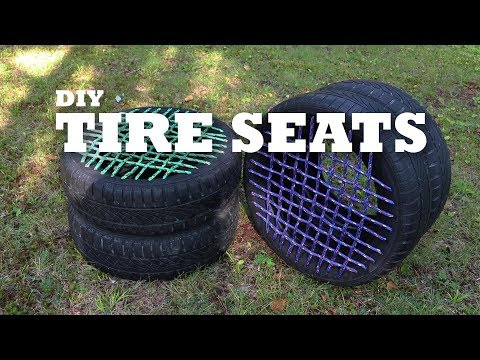 This not only creates traction and grip on the road, it also helps remove any water and dirt from the tire’s surface.
This not only creates traction and grip on the road, it also helps remove any water and dirt from the tire’s surface.
In general, the assembly line process starts with mixing and combining raw materials. From there, it progresses through various stages to form the tire and bond various components, such as the treads and sidewalls, together. The final stage involves curing the tires to harden the rubber and set in final details, such as branding and tire size information. Let's break each down.
Materials SelectionDepending on the type of tire and its purpose in life, different rubbers, pigments, oils, and additives are selected to create the desired characteristics. This mix ends up being somewhere in the neighborhood of 20 percent natural rubber and 25 percent synthetic rubber, with the rest of the tire being made of metals and other materials. Michelin notes that its tires contain numerous chemical agents that give various tire qualities such as low rolling resistance or ultra-high grip.
Even in today’s automation-heavy world, there are still parts of tire manufacturing that rely on human hands. Michelin says that its tires progress through both hand-made and automated processes, and notes that when necessary, it invents its own manufacturing machines and techniques. Tire production begins by mixing the ingredients together, which yields a homogeneous black mixture of tire goo. Computers monitor and control this process to ensure consistency among the huge numbers of tires being produced. The mixture then moves to other machines to be processed into various tire parts.
Assembly continues when an inner liner is placed inside the tire. Since there are no tubes in modern automotive tires, this air- and moisture-resistant material takes its place. Belts and plies are added next, which are made from steel and other materials. To ensure a tight fit with the wheel, bronze-coated steel wires are added to the tires’ sidewalls.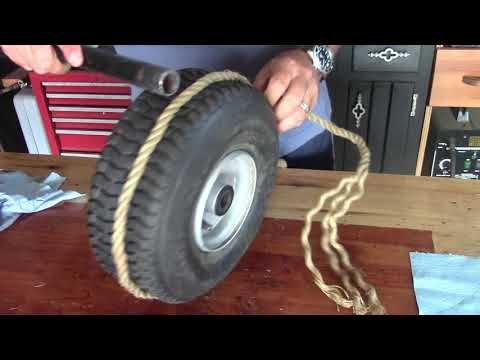 The tire components are placed in position and then pressed together to create “green” tires.
The tire components are placed in position and then pressed together to create “green” tires.
Before curing, tires are called “green” tires, and need to be heated to complete the molding and building process. The tires are placed into a mold and are either inflated or pressed against it, which gives the tire both a tread pattern and sidewall stamping. After the molding is complete, tires are heated to a high temperature—usually 300 degrees Fahrenheit or more—for up to a half-hour. This process vulcanizes the tire, which hardens the rubber and helps cure it. Specialty tires, especially large off-road and heavy machinery tires, can take much longer to cure.
Snow tires are made from special rubbers and materials that allow them to provide grip in winter weather., MichelinTesting and Quality ControlTire manufacturers each have their own proprietary testing methods, but the process sometimes involves grabbing a random selection of tires rolling off the assembly line. The tires are tested on the road, cut into to check for consistency and imperfections, and x-rayed.
The tires are tested on the road, cut into to check for consistency and imperfections, and x-rayed.
You’ve got questions, The Drive has answers!
Q: How long do tires last?A: This will greatly vary and depend on driving conditions, driving habits, and type of tire, but the general rule is that tires could last up to 5-6 years. For more information on tire care and maintenance, visit our article, How Long Do Tires Last and When Should I Replace Them?
Q: Is natural rubber used in tires?A: Yes, though the amount is different for every tire. In general, tires today contain around 20 percent natural rubber and 25 or so percent synthetic rubber. Metal and other materials make up the remaining tire materials list.
Q: What do the numbers on the side of my tire mean?A: We assume you’re asking about the string of text that starts with “P.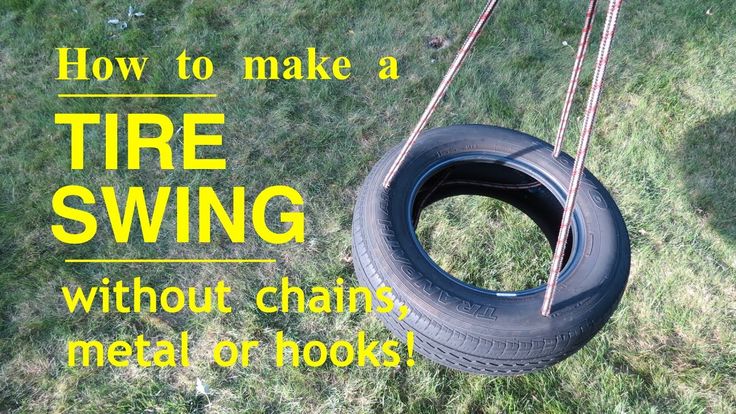 ” This is a designation of your tire size. If you see P225/65R17 on the side of your tire, it means this:
” This is a designation of your tire size. If you see P225/65R17 on the side of your tire, it means this:
A: While cheap tires are not universally bad, there’s a reason high-end tires cost more, and it’s not just branding. Cheap tires may contain less rubber or may be constructed with a mix of materials that don’t give them the longevity of more expensive tire models.
Q: What does the mileage warranty on my tires mean?A: Your tires’ mileage warranty means that the manufacturer will cover them against defects for the duration of that warranty and that the company expects its tires to last at least as long as the warranty under ideal conditions. This does not mean that only getting 25,000 miles out of a 50,000-mile tire will net you a new set of tires if you complain. It means that, after an inspection, you may be entitled to a new set of tires at a prorated price, which will depend on how many miles you have left on the warranty. If you failed to rotate the tires or take care of them properly, you can expect some pushback when trying to make a warranty claim.
This does not mean that only getting 25,000 miles out of a 50,000-mile tire will net you a new set of tires if you complain. It means that, after an inspection, you may be entitled to a new set of tires at a prorated price, which will depend on how many miles you have left on the warranty. If you failed to rotate the tires or take care of them properly, you can expect some pushback when trying to make a warranty claim.
You know you want more tire manufacturing facts!
 Michelin offers Tweel tires, which are airless radial tires that replaces the entire wheel/tire setup. They are currently offered for UTVs and some heavy equipment, but the company has developed and shown off automotive prototypes.
Michelin offers Tweel tires, which are airless radial tires that replaces the entire wheel/tire setup. They are currently offered for UTVs and some heavy equipment, but the company has developed and shown off automotive prototypes.We’re here to be expert guides in everything How To related. Use us, compliment us, yell at us. Comment below, and let’s talk! You can also shout at us on Twitter or Instagram, here are our profiles. Got a question? Got a pro tip? Send us a note: guidesandgear@thedrive. com.
com.
Many car owners have a general idea about the structure of car tires, but few can tell you how tires are made. The most common idea is that rubber is poured into a certain form, from which the finished product is then pressed out.
In fact, this is not the case, and the manufacture of car tires is a complex high-tech process that requires complex specialized equipment, careful automated control and the participation of highly qualified specialists. 9Ol000 Created back in 1846 by Robert William Thomson. At that time, no one was interested in his invention, and they returned to the idea of a pneumatic tire only 40 years later, when in 1887 the Scotsman John Dunlop came up with the idea of making hoops from a watering hose, putting them on his son’s bicycle wheels and pumping them with air.
Three years later, Charles Kingston Welch proposed to separate the tube and tire, insert wire rings into the edges of the tire and put them on the rim, which then received a recess to the center. At the same time, rational methods for mounting and dismounting tires were proposed, which made it possible to use rubber tires on cars.
The main material used in the production of tires is rubber, made from natural or artificial rubber. Depending on the proportions and what kind of rubber is added, summer or winter car tires are ultimately obtained.
For example, mainly artificial rubber is added to the rubber compound for summer tires, so the rubber turns out to be more rigid, resistant to wear, it does not “float” at high temperatures and provides reliable grip with the roadway. To make winter tires, natural rubber is added, which makes the rubber softer and more elastic.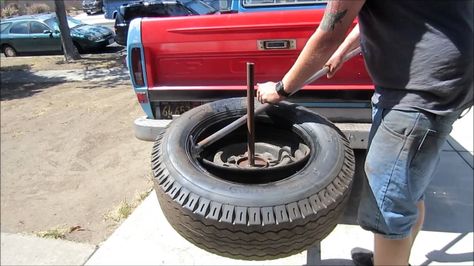 Thanks to this, winter tires do not “tan” even in very severe frosts.
Thanks to this, winter tires do not “tan” even in very severe frosts.
The cord of the future tire is made of metal, textile or polymer threads on a special machine - "creel". From many coils of wire, the threads converge in one place. In general terms, the design resembles a loom. Next, the woven cord enters the extruder, where it is rubberized.
The finished carcass is subsequently cut into strips of different widths to produce tires of different dimensions. And it is wound into coils for storage and transportation. Since unvulcanized rubber is very sticky, spacers are inserted between the layers to prevent damage to the carcass.
The next step in production is the creation of the protector.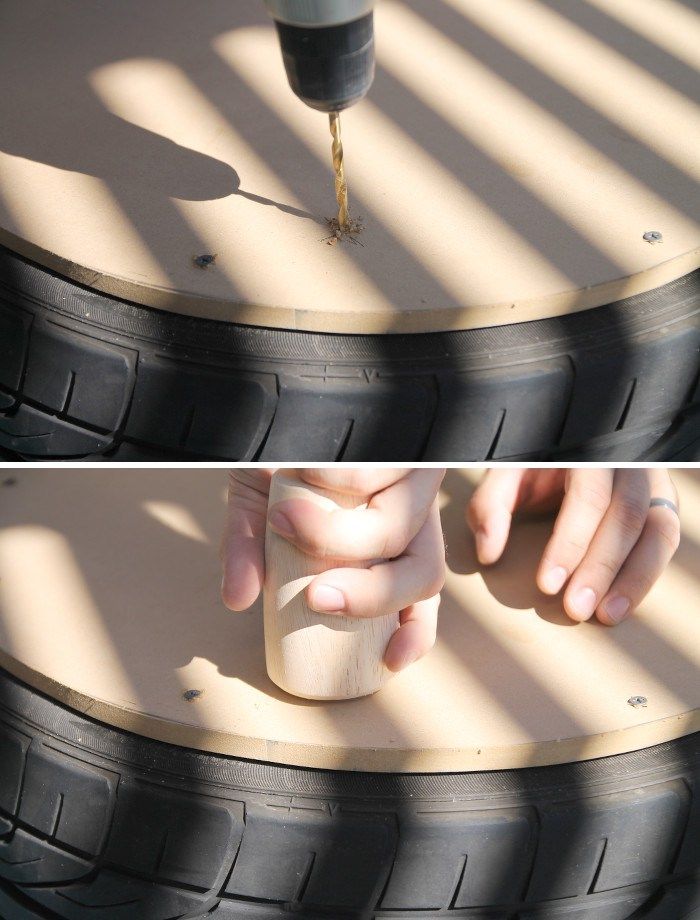 The rubberized cord tape is threaded into a machine that extrudes it into a tread. So that workers can visually quickly determine the dimension of the future tire, colored lines are made on the tread with paint.
The rubberized cord tape is threaded into a machine that extrudes it into a tread. So that workers can visually quickly determine the dimension of the future tire, colored lines are made on the tread with paint.
The tire bead consists of a bead ring and a layer of viscous airtight rubber. The production of tire beads begins with the fact that the metal wire is rubberized, after which it is twisted to the required radius of the rim and cut into circles. After that, assembly is carried out on the machine. More details about this process can be seen on the video.
The penultimate stage is the assembly of the finished tire. It is carried out on the machine, which receives all the finished elements. The machine is operated by two workers: an assembler and a reloader.
The first one hangs the bead rings and the second inserts the component spools. After that, the machine does everything automatically: it connects the parts together and inflates the workpiece with air under the tread with a breaker. The almost finished tire is weighed and inspected for defects. This process can also be seen on video.
After that, the machine does everything automatically: it connects the parts together and inflates the workpiece with air under the tread with a breaker. The almost finished tire is weighed and inspected for defects. This process can also be seen on video.
The last step in production is vulcanization. The tire is processed with hot steam at a pressure of 15 bar and at a temperature of about 200 degrees Celsius. As a result, rubber, soot and various additives are sintered, and a tread pattern and inscriptions are applied to the surface of the tire using molds. Finished tires are checked for compliance with all required characteristics.
Speaking of car tires, we rarely think of what and how this product is made. Meanwhile, everything is not as simple as it might seem at first glance. Tire production technology includes many stages and nuances. The initial stage in the creation of automobile tires is the development of their profile and tread pattern using specialized computer programs for volumetric modeling. Further, the computer calculates and analyzes the efficiency of the tire in various situations and operating conditions, after which the shortcomings are eliminated, test samples are cut on special machines manually and tested in real conditions.
The initial stage in the creation of automobile tires is the development of their profile and tread pattern using specialized computer programs for volumetric modeling. Further, the computer calculates and analyzes the efficiency of the tire in various situations and operating conditions, after which the shortcomings are eliminated, test samples are cut on special machines manually and tested in real conditions.
Article content :
The material from which the tire is made is of paramount importance. It should be understood that tires from different manufacturers differ significantly primarily in the properties of rubber, the composition of which is often a trade secret. Such a serious approach is explained by the fact that the rubber compound determines the technical characteristics of the tires, including:

The rubber composition of modern car tires includes many materials and components: various additives and chemical compounds that determine the properties and behavior of tires. Entire laboratories in each company are engaged in the selection and combination of these elements, because it is chemical additives and their dosage that allow the product to surpass competitors. The base for all is ordinary rubber, the composition of which is no secret to anyone. It consists of:

Note that Russian rubber is recognized as the best in the world, and therefore is in demand and used by most of the world's leading manufacturing companies. And since synthetic rubber is inferior to natural rubber in all respects, the Russian Federation will remain the leader in this area for a very long time.
The technological process of creating a tire, among other things, includes several parallel stages in the manufacture of its components, among which:
